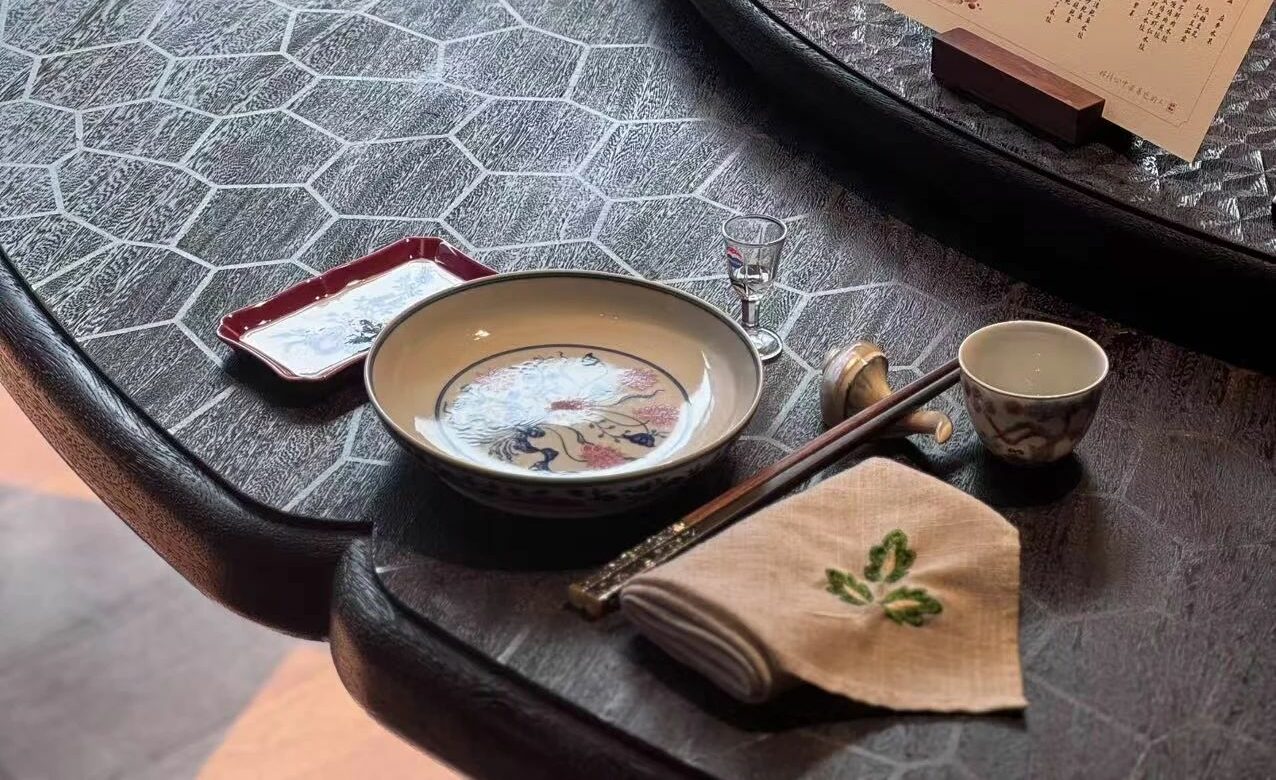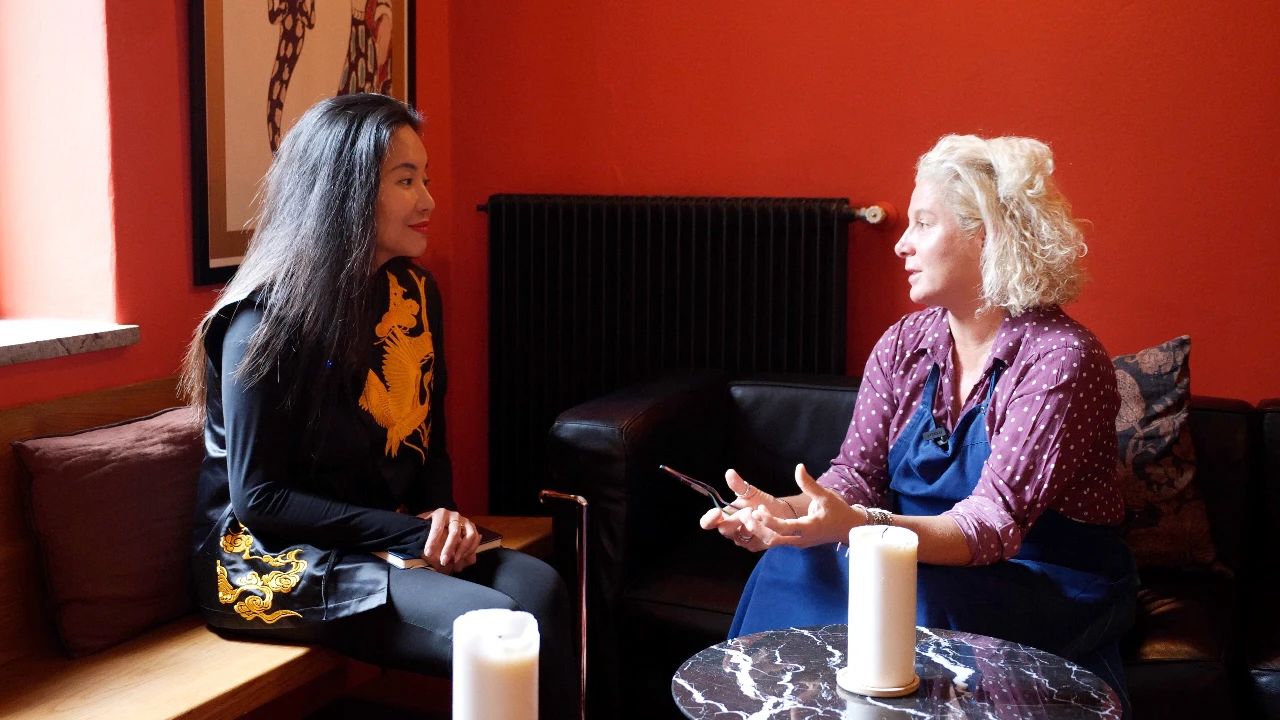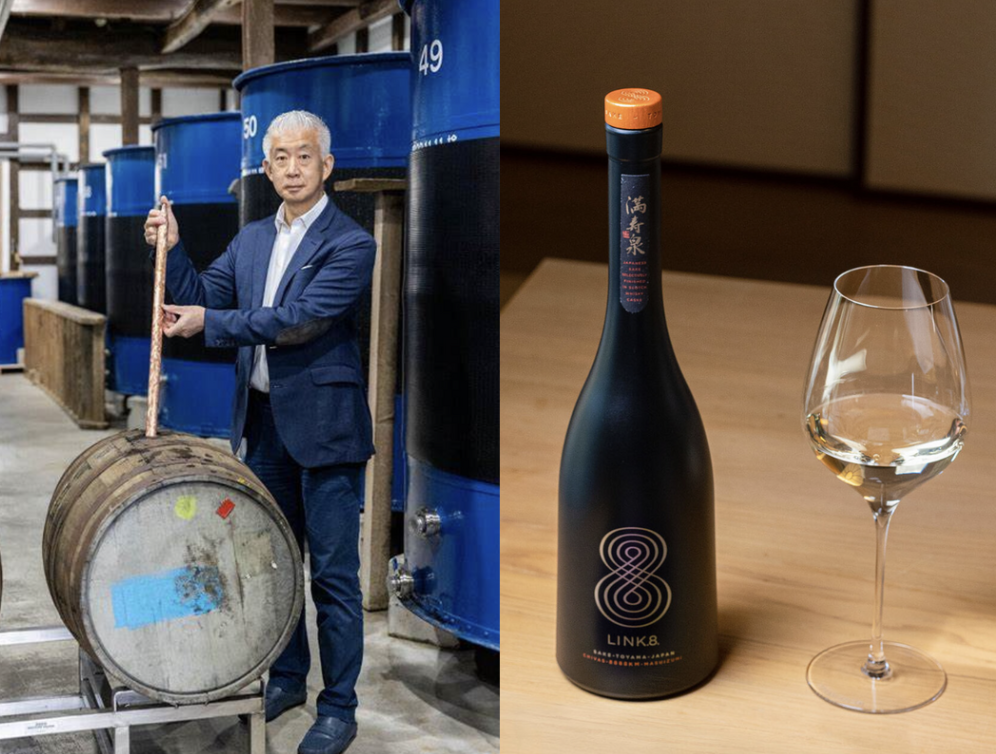In early September this year, I visited a series of “destination” restaurants in Toyama and Kanazawa, located in Japan’s Hokuriku region. Currently, there are several weekly direct flights from Shanghai to Komatsu. It is a convenient one-hour drive from Komatsu to Kanazawa, and the Shinkansen between Kanazawa and Toyama takes just 20 minutes, making it a new-generation gourmet destination.
The seafood of Toyama Bay in Japan’s Hokuriku region is renowned worldwide, with around 500 species inhabiting its waters. For food lovers, Hokuriku is a hidden gem, offering not just the famous sweet white shrimp but also the best of Japan’s firefly squid in the spring season.
One of the most iconic Japanese restaurants in Toyama, Oryouri Fujii, was awarded two stars in the Michelin Guide Hokuriku 2021 Special Edition. The restaurant relocated from Gofuku in Toyama to Iwase in 2019. Iwase, a former prosperous port town known for trade, is famous for the renowned sake brewery “Masuizumi” by Masuda Sake Brewery. To revitalize the Iwase area, Masuda Sake Brewery has been actively involved in city planning, attracting many prominent restaurants and artisans, making this area an emerging hotspot.
@Jocelyn華姐的TastyTrip YouTube
Chef Hironori Fujii was born in Toyama and grew up around his parents, who ran a fish shop. After high school, he enrolled in Tsuji Culinary Institute in Tokyo, where he specialized in Japanese cuisine. After graduating, he trained for five years at the Japanese restaurant “Zeniya” in Kanazawa and then spent six years at “Mashita” in Gion, Kyoto.

After deciding to return to Toyama, he eventually established Oryouri Fujii in 2011. Upon relocating the restaurant to Iwase, Chef Fujii continued to pursue refinement in every aspect: cuisine, drinks, tableware, ambiance, and service. In addition to earning two Michelin stars, the restaurant was also selectedinto “Destination Restaurants 2023″ list by The Japan Times.
Reflecting on his upbringing, Chef Fujii said, “My father used to run a fish store. I know it’s a great job, but at that time, I thought it was very tough. So instead, I wanted to be a chef who seemed cooler.” And so began his journey as a chef.
Upon entering the restaurant, one is greeted by a beautiful garden, while the dining area offers both a counter for eight guests and spacious private rooms accommodating more than eight. Both the counter and private rooms feature large windows, offering views of lush, verdant Japanese gardens.

The meal began with White Shrimp with Water Greens and Chrysanthemum, using fresh white shrimp from Toyama, which was translucent and remarkably sweet, paired with crisp, slightly bitter water greens. The acidity of the sudachi sauce enhanced the sweetness of the shrimp, leaving a lingering, refreshing aftertaste. Chef Fujii remarked, “With the best ingredients, techniques, and knowledge, seeing customers happy with my dishes is a form of reward for me. I’m trying to create simple, straightforward cuisine.”
Following the local custom of enjoying regional sake, we ordered Masuizumi’s Bo and Iwa. The glassware presented to us were works by glass artisan Taizo Yasuda from Toyama. When we opened the wooden box, we found beautiful, colorful, gold-accented glass cups that sparkled and brought us joy. The cups were relatively large, just to my liking, and I regretted not having the time to purchase some this visit, but I won’t miss the chance on my next.
One of the highlights of the day was the Softshell Turtle Egg Tofu with Silver Grass, which appeared like a delicate, smooth crescent moon. Inside the egg tofu there was tender and gelatinous soft-shell turtle meat. The dish was finished with a light bonito dashi that added layers of umami and a hint of smoky undertone. The green, seasonal silver grass, which decorated the tofu, added a refreshing crunch. Chef Fujii said, “Dashi is the foundation of Japanese cuisine. If the dashi is delicious, then all the dishes will be delicious. That’s why I put a lot of effort into it.” He detailed the process of making the soft-shell turtle broth, from cutting and boiling the turtle to extracting the broth, which was then used to make the egg tofu. For him, perfecting dashi is the key to every dish.
 Soft-Shell Turtle Egg Tofu with Silver Grass
Soft-Shell Turtle Egg Tofu with Silver Grass
The next course was Flathead Sashimi, which had a light texture and delicate flavor. It was served with soy sauce and wasabi or could be enjoyed with a sprinkle of seawater salt from Suzu on the Noto Peninsula and a squeeze of sudachi, offering contrasting tastes.
Another dish was Black Throat Perch Shabushabu with Scallions, which, although listed as “otsukuri” (sashimi) on the menu, was prepared by briefly blanching the fish in hot broth. The fish slices were quickly dipped in the broth, turning the surface a pale pink, with the intricate marbling of fat shimmering in the sunlight. It was the peak season for black throat perch, and its texture was smooth and plump, while the gelatinous skin became more prominent after blanching. The slight warmth melted some of the fish fat, blending seamlessly with the tangy sauce and aromatic scallions. Every bite was a delight.
The Blue Crab Somen was served piping hot, with each noodle delicately coated in a thickened crab broth, accompanied by sweet and firm blue crab leg meat. This dish perfectly exemplified the chef’s philosophy that “true flavor lies in simplicity.”
Chef Fujii also introduced some signature dishes on the menu. He said, “Hassun is a dish that showcases the season. For example, we currently use autumnal wild grasses, like silver grass, to highlight the feeling of autumn.” Using ingredients to convey the sense of the season has always been his approach. TheHassun, arranged on beautiful tableware, featured an array of small dishes, each a visual and culinary delight.

The fish cakes, made from trimmings of white fish, were fluffy with a sweetness reminiscent of castella, yet carried the umami of fish. The Pear with Prosciutto features local pears, sweet with a hint of acidity, crisp and juicy, perfectly complementing the saltiness of the prosciutto. There was also a wafer filled with a beetroot, and the traditional monaka shell added a hint of sticky rice texture. Among the smaller dishes there were also soy-marinated Daidokuji natto hidden inside small taro, small fish mixed with Manjuji peppers, and miso-marinated whelk—altogether a feast for the senses.
The Charcoal-Grilled Sweetfish was next, about 13 cm long and prepared with a light salting before being grilled over charcoal, filling the air with a rich aroma. “There’s a certain period when fishing is restricted to protect the ecosystem,” Chef Fujii explained. “In my opinion, now (early September) is when the sweetfish isthe fattiest and the most delicious.” The small, natural sweetfish were tilted and grilled using a special skewer, allowing the fats to drip down towards the head, which became crisp and golden. The process was finished with a light smoking using Japanese tea, adding depth to the aroma. The fish was served with a subtle white smoke, and the first bite from the head brought a gentle bitterness that gradually turned into a sweet aftertaste.
Kobujime Sweet Shrimp with Kinjiso was the next dish, with shrimp that had been marinated using the kobujime technique, absorbing the umami of kombu. The kinjiso, a deep purple vegetable at the bottom, had a slight slippery texture reminiscent of seaweed, pairing perfectly with the sweet shrimp.
The Yoshikawa Eggplant with Hamo was a showcase of the chef’s knife skills. The hamo was finely cut using the “hamogiri” technique to ensure the small bones were chopped so finely that they posed no issue when eaten.
The subtle flavor of the hamo was enhanced by the dashi broth, while the yuzu zest added a refreshing touch. The Yoshikawa eggplant had thin skin but thick, juicy flesh that had soaked up the delicate broth, becoming soft but not mushy.
The Sweetfish Pot Rice was another masterpiece. As the lid was lifted, the aroma of the fish and rice filled the air, revealing dozens of sweetfish neatly arranged over the rice. Unlike the charcoal-grilled sweetfish, the pot rice allowed the fish to steam together with the rice, permeating each grain with the fat and umami of the fish. The chef carefully removed the head and bones, ensuring the tender fish meat was evenly mixed into the rice, making each bite flavorful.
 Sweetfish Pot Rice
Sweetfish Pot Rice
Finally, dessert was an adult-flavored treat, Sake Ice Cream made with Masuizumi Junmai Daiginjo, paired with soft, smooth adzuki beans.
Every dish on the Oryouri Fujii menu embodies Chef Fujii’s deep understanding of ingredients and exceptional culinary skills, from the selected white shrimp to the uniquesoftshell turtle egg tofu and the seasonal black throat perch. When asked about his favorite ingredient, Chef Fujii confidently said, “If I had to choose, it would be the Buri (Japanese amberjack) from Toyama. I think it’s the best.” He added that the cold months of November, December, and January are when Buri is at its peak, with firm flesh and a particularly rich flavor.
Beyond his focus on cuisine, Chef Fujii aims to create a restaurant that makes guests willing to return repeatedly. “Turning the shops and streets into somewhere that makes people ready to come back over and over again is important. We hope to have loyal customers who return many times.”
I recall my first visit in March when it was firefly squid season. Dining in a private room, the apprentice turned off the lights, letting us see the freshly caught, glowing firefly squid in the dark, followed by a direct charcoal grill in the room—an unforgettable experience. Eiji Taniguchi, the chef at L’evo, another two-star restaurant in Toyama, told me that beyond the exceptional cuisine at Oryouri Fujii, the chance to chat with Chef Fujii makes the dining experience delightful and carefree.

Oryouri Fujii continues to refine and provide the ultimate dining experience with local Toyama ingredients, creating dishes that capture the essence of Toyama’s seasonal flavors. I eagerly anticipate my next visit to see what the new season will bring.
Author: Jocelyn 华姐、Patty Chuang









